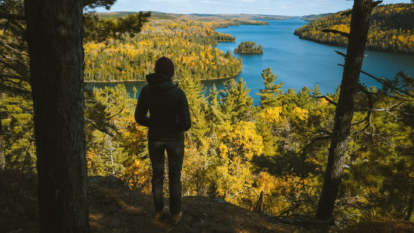Victory for the Boundary Waters
All photos by Nate Ptacek
It’s not every day that we get to celebrate an environmental win, but January 26, 2023, was one of those days. Under the leadership of Secretary Deb Haaland, the United States Department of the Interior issued a 20-year mineral withdrawal for the watershed of the Boundary Waters Canoe Area Wilderness in Northeastern Minnesota. This announcement marked the single biggest protection for the Wilderness since 1978, prohibiting mining development along the southern edge of the park, a region that has been threatened by the proposed Twin Metals copper mine (and others) for over a decade.
This is an issue that I care about deeply, as does my employer—Patagonia. Patagonia has supported the Boundary Waters through grant funding, stories, films, Patagonia Action Works, employee environmental internships and more. But the heavy lifting and strategic work to reach this milestone was led by the nonprofit Save the Boundary Waters, a small group of dedicated activists based in Ely, Minnesota. A decade of petitions, legal battles, protests, social media posts, interviews, patient conversations around the campfire and in our nation’s capital, film tours, book tours, miles paddled and portaged, a year-long Wilderness sit-in, and rallying the support of hundreds of thousands of people across the nation truly exemplifies environmental activist Brock Evans’ mantra “endless pressure, endlessly applied.”
So, what’s next? Twenty years isn’t forever, but permanent protection through an act of Congress is. On January 31, 2023, US Congresswoman Betty McCollum reintroduced the Boundary Waters Wilderness Protection and Pollution Prevention Act (HR 668), which would permanently ban sulfide-ore copper mining on federal lands within the watershed of the Boundary Waters.
What can you do? First, contact your elected officials and tell them to support HR 668 today. And after that? Plan your own Boundary Waters canoe trip. The photos below offer a taste of this special place. Bring a friend and toast success with a cup of fresh lake water. It’s important that we relish this victory and rest up for the hard work that’s still to come.

If you know, you know. This iconic fire grate is found at each of over 2,000 dedicated campsites in the Boundary Waters Canoe Area Wilderness. Each one was lovingly paddled and portaged deep into the park by USFS Wilderness Rangers along trails that are maintained with hand tools only. Otto Lake. September 2012.
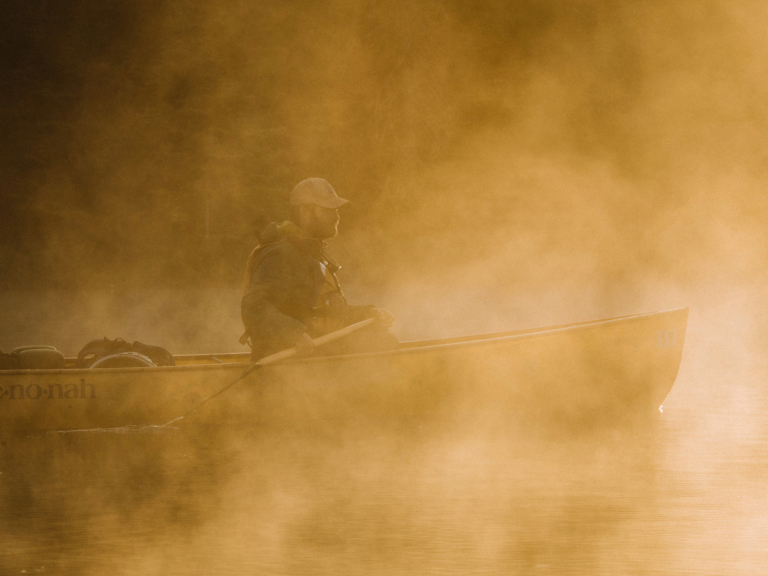
Dave Freeman paddles through the rising mist and honey light of a summer solstice morning, a day that officially marked one season to go for the Year in the Wilderness expedition. Snipe Lake. June 2016.
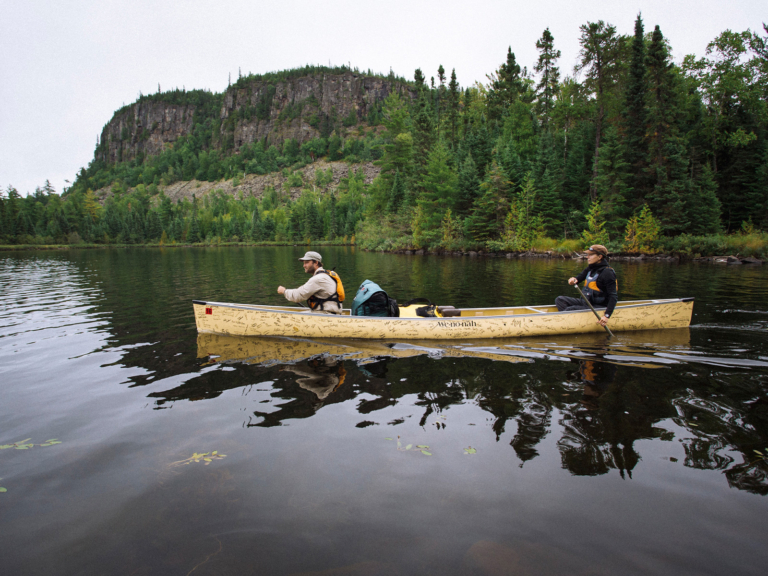
Dave and Amy Freeman cross Mountain Lake during Paddle to DC, a 100-day, 2,000-mile expedition that began at the proposed site of the Twin Metals mine, went through the Boundary Waters and finished in Washington, DC, where they delivered a “floating petition” (hundreds of signatures on the hull of their canoe) to lawmakers in our nation’s capital. Supported by a Patagonia environmental internship, I joined the first 300-plus miles of the expedition to make a film about the Freeman’s journey.
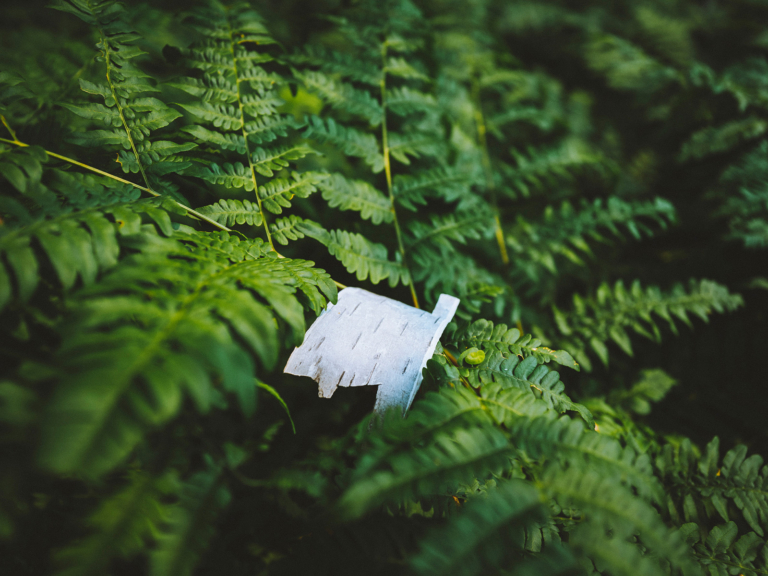
A piece of birch bark rests on an explosion of ferns, a common scene found in this lush boreal ecosystem. Birch bark is one of the most important traditional materials found in the region: The thin, paper-like outer bark contains an oil that renders it watertight and highly flammable, which is perfect for everything from fire starting to making baskets, cooking vessels and, most importantly, the birch bark canoe.
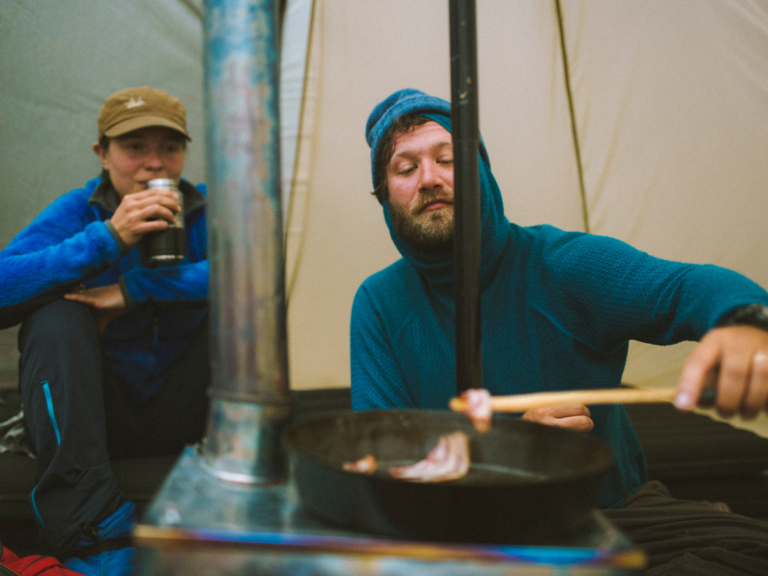
The Freemans cook bacon inside their hot tent on a cold morning in late October 2015, near the beginning of a 366-day sit-in where the couple camped in the Boundary Waters Wilderness for an entire calendar year. Through a second Patagonia internship, I visited the Freemans three times to make another film on their advocacy. Communicating via satellite on social media and to schools across the country, the Freemans used the expedition to share the beauty of the Boundary Waters and to “speak loudly for this quiet place.” Basswood Lake.
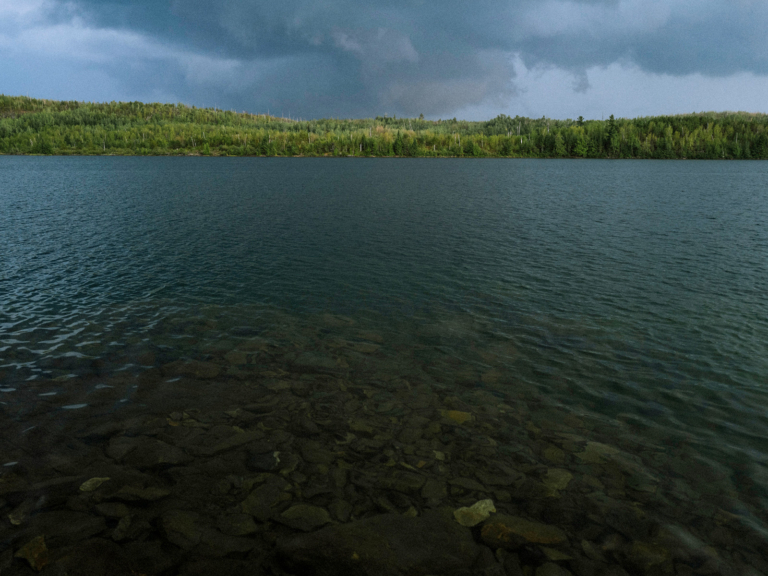
Afternoon storm clouds gather on Knife Lake, one of the large lakes that forms the border between Canada and Minnesota. The current name is translated from Lac des Couteaux in French, which was in turn translated from Mookomaan Zaaga’igan in Anishinaabemowin, a reference to traditional siltstone quarries along the lakeshore that were used to make knives and projectile points. Knife Lake. August 2021.
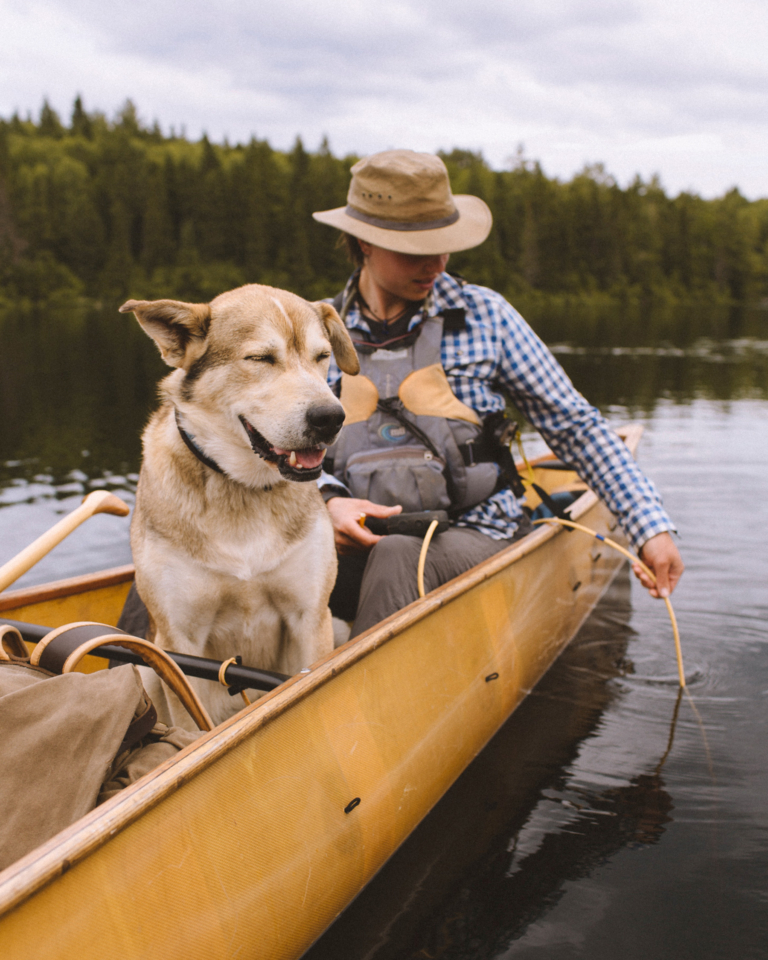
The proposed Twin Metals copper mine would operate in a sulfide-ore body, with great risk of acid mine drainage that could irreversibly degrade the pristine water of the Boundary Waters Wilderness, and further downstream, Quetico Provincial Park and Voyageurs National Park. Here, Amy gathers water quality data and samples with an assist from Tank the sled dog. The data collected by the Freemans helped form a valuable body of baseline data from each lake they visited during their Year in the Wilderness expedition. Long Island Lake. June 2016.
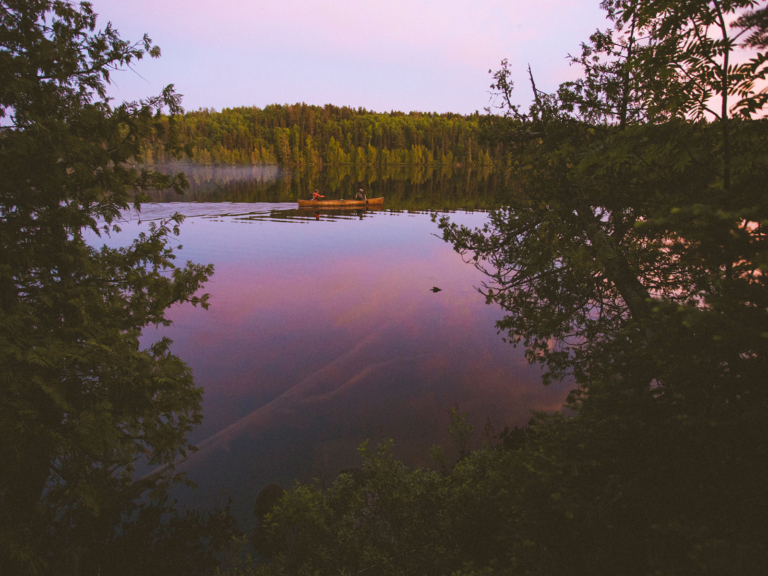
Dave and Amy head out for an evening stroll, near the end of their Year in the Wilderness expedition. Unlike other places in the USFS Wilderness system, the quiet beauty and intricate maze of lakes and rivers found in the Boundary Waters provides endless opportunity for backcountry travel and self-reflection. By this point in the journey, the Freemans had made it through negative-35-degree temperatures in winter and the worst of bug season in spring. Long Island Lake. June 2016.
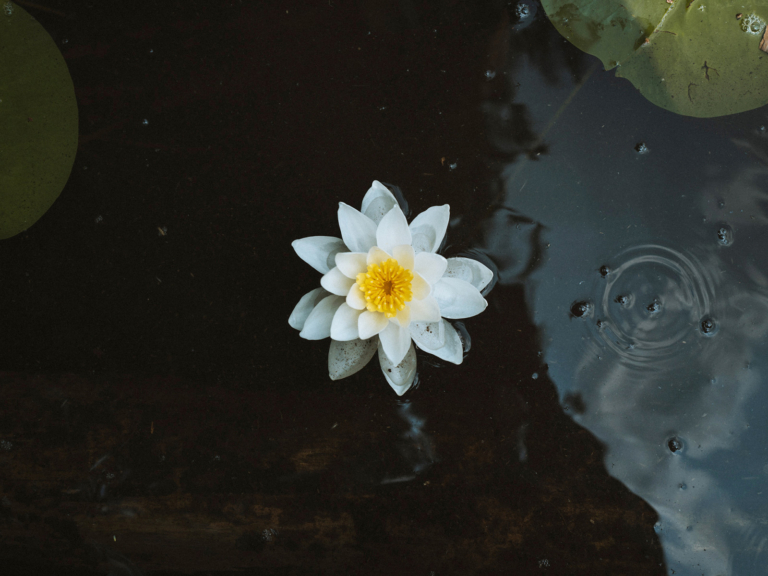
A lily pad on Ogishkemuncie Lake. Ogishkemuncie means “kingfisher” in Anishinaabemowin. The kingfisher is a bird often seen flitting along smaller, riverine stretches of lakes in search of its next meal.
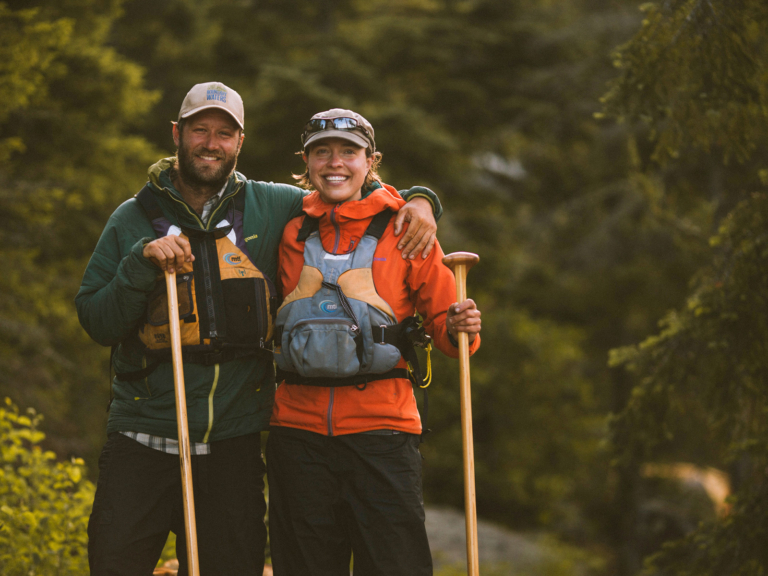
Smiles for miles. Hardworking local guides and wilderness educators who have long been part of the Boundary Waters community, Dave and Amy began their partnership with Save the Boundary Waters in 2014. They first heard whispers of the proposed sulfide-ore copper mine while passing through their home in Ely, Minnesota, during a crossing of North America by kayak, canoe and dogsled. They decided to dedicate the next decade of their lives to advocating for their favorite place on Earth.
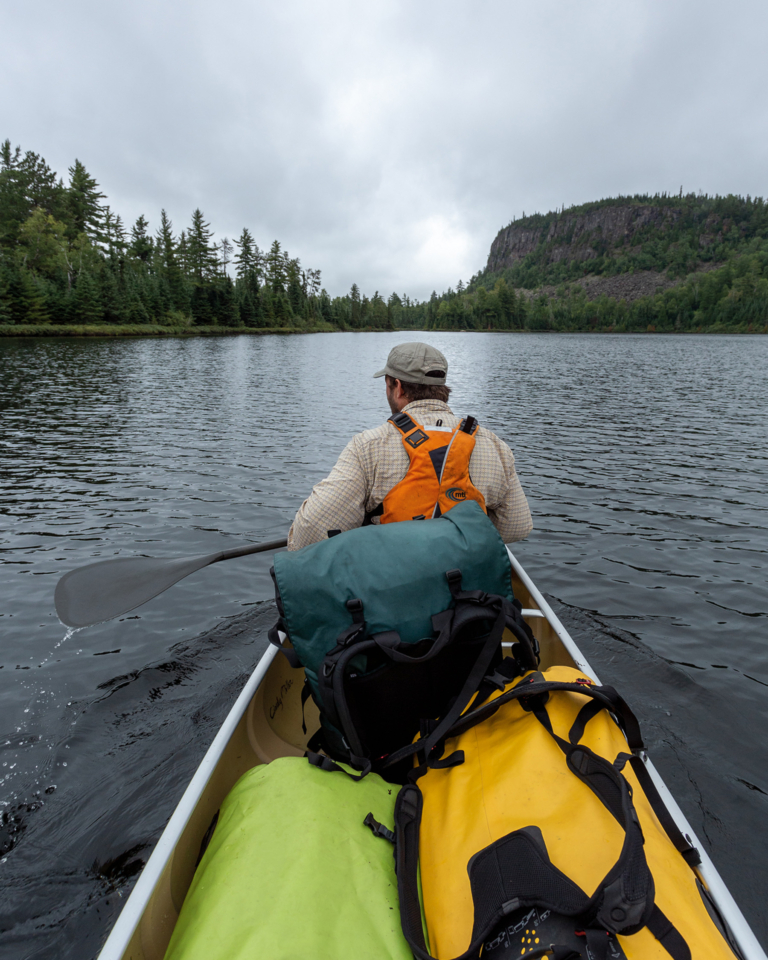
Dave (alongside Amy, not pictured) voyages toward Washington, DC, one stroke at a time. When I asked Dave how he and Amy kept going on the toughest days of the Paddle to DC expedition, he told me they broke it down into smaller goals: “The next state, the next campsite, the next lake, the end of the next portage.” Mountain Lake. August 2014.
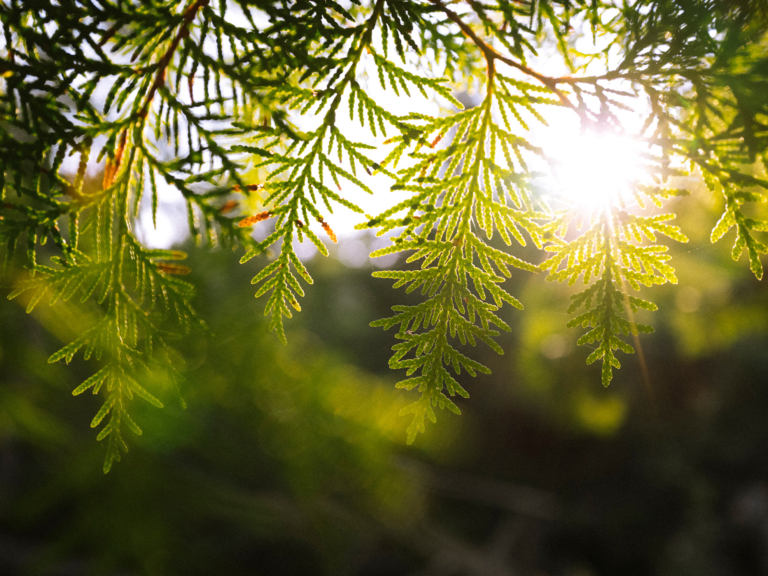
Cedar boughs hang in evening light above Rose Lake. August 2021.
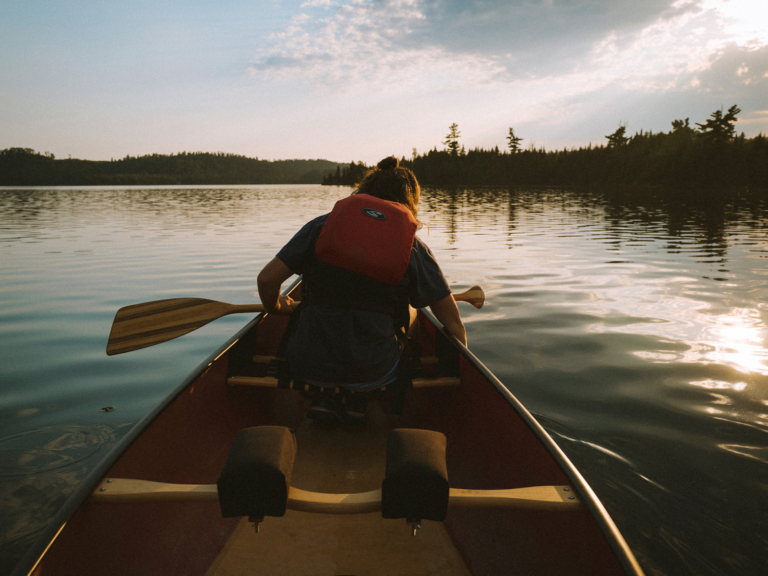
A paddler tests the water on a calm evening on Duncan Lake. August 2021.
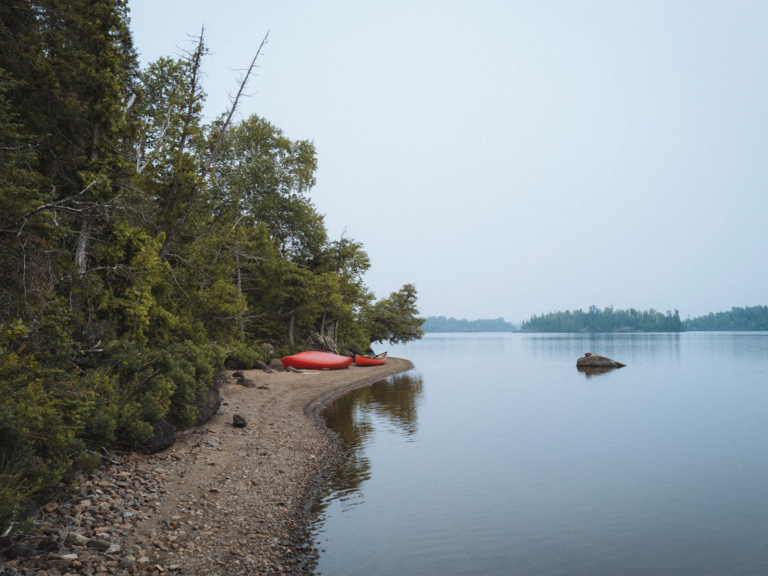
Two canoes take an evening rest along a sandy esker on Little Saganaga Lake, a remnant of the glacial scouring that formed the current landscape of the Boundary Waters some 10,000 years ago. Saganaga means “lake of many islands” in Anishinaabemowin. August 2021.
